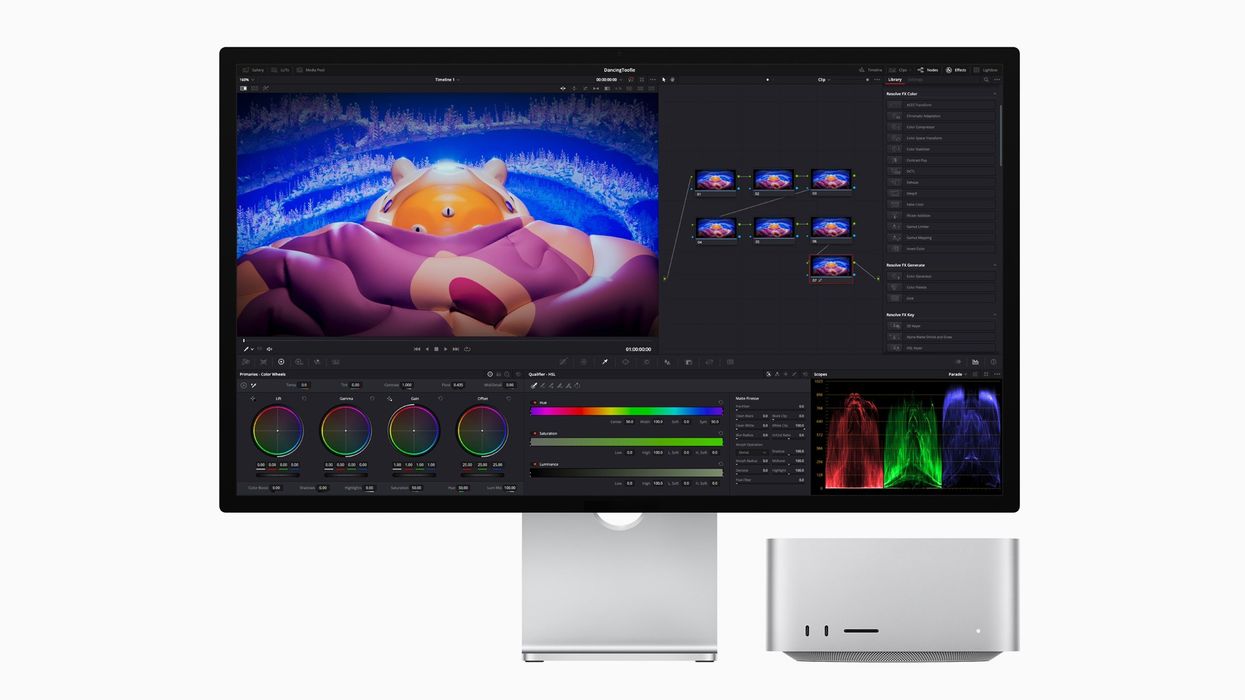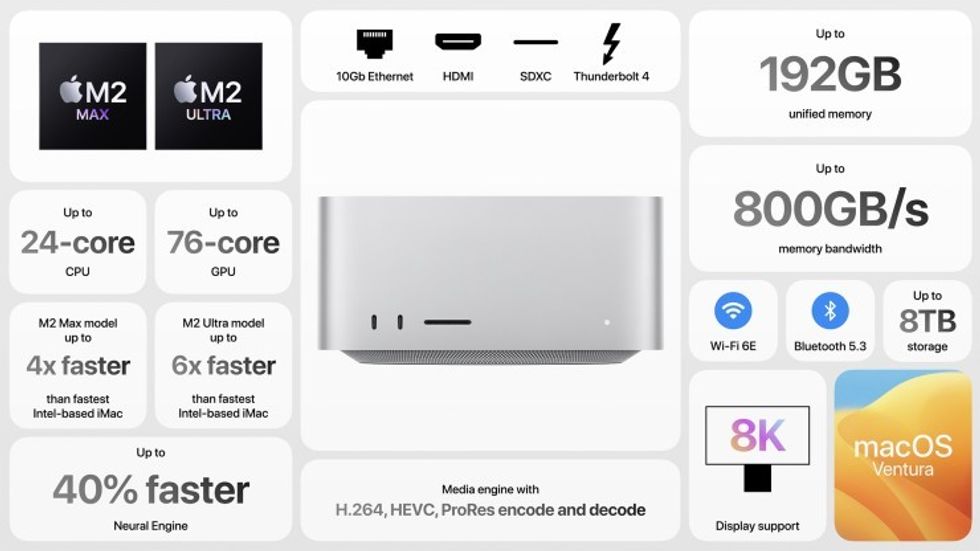Is the M2 Ultra Mac Studio Actually Better Than the New Mac Pro?
Let’s explore one of the biggest questions from this year’s Apple WWDC.

After following the build-up and subsequent collective release of anticipation from this year’s Apple WWDC, we—and the internet in general—have some questions. Most notably, who the hell is this AR/VR headset for, and why does it look so weird?
While we might not have immediate answers to that query. We might have some solutions for those out there wondering which new Apple desktop might be the best investment for their video production and editing needs.
Let’s take a look at the new Mac Studio and explore how it might actually be a cheaper (and perhaps ultimately better) investment than Apple’s M2 Ultra Mac Pro.
A Look at the New Mac Studio
So, looking at the new Mac Studio first as compared to the new Mac Pro, these are both two of the most powerful Macs ever made. The Mac Studio features M2 Max and the new M2 Ultra and promises to deliver a huge boost in performance and enhanced connectivity with its tight and compact design. The Mac Studio is also boasted to be up to six times faster than the most powerful Intel-based 27-inch iMac, and up to three times faster than the previous-generation Mac Studio with the M1 Ultra.
Needless to say, it’s an upgrade and people are excited about it.
“The new Mac Studio and Mac Pro with Apple silicon are the two most powerful Macs we’ve ever made," John Ternus, Apple's Senior Vice President of Hardware Engineering, said. "Mac Studio has been a breakthrough for pros everywhere, and it’s at the heart of hundreds of thousands of home and pro studios across the world. Today, it gets even better with M2 Max and the new M2 Ultra, featuring even more performance and enhanced connectivity."
With the M2 Max and M2 Ultra in particular, this new Mac Studio should really lap previous generations in all manners of CPU and GPU with its 12-core CPU and up to 38-core GPU, plus 96GB of unified memory with 400GB/s of memory bandwidth to boot.
Comparing the Mac Studio to the M2 Ultra Mac Pro
But the big question here is specifically how the Mac Studio compares to the new M2 Ultra Mac Pro. And, as many commenters and YouTubers have pointed out, like in the video above by Luke Miani, the Mac Studio with the M2 Ultra at its heart is going to be pretty much the exact same in specs, speeds, and processing as the M2 Ultra Mac Pro—but, most notably, at nearly half the price.
Of course, while the chips are the same and many of the features, there’s either a lot or a little to be said about the housing and what each desktop could eventually become now or in the future with add-ons. But if you’re looking for more bang for your buck today, it makes total sense for many creators to opt for the Mac Studio over the Pro at this point.
They should be just about exactly equal for any sort of video rendering or compositing work. If you actually prefer a compact size, it might be easier to store and travel with a Mac Studio over the larger Mac Pro frame. However, if you do anticipate that an M2 Ultra chip-powered Mac Studio might need a boost in the future a year or more down the line, then maybe the Pro would be a better option for those modifications later.

Mac Studio Pricing and Availability
With a wide array of connectivity within each reach for all types of video and creative professionals, this new Mac Studio is going to provide quality 8K resolution and 240Hz frame rates for high-end video work. By offering support for up to six Pro Display XDRs, you should have plenty of screen real estate for any advanced multi-screen workflows.
Here are some of the featured specs as well as a look at the pricing and availability:
Apple M2 Max chip or Apple M2 Ultra chip
Up to 24-core CPU
Up to 76-core GPU
Up to 192GB of unified memory
Up to 8TB of storage
Price: $1,999
The Mac Studio is available starting on June 13th, 2023.
How do you feel about this new Mac Studio and how it compares to other Mac desktops? Let us know your thoughts in the comments below.













